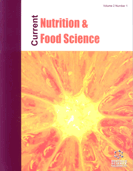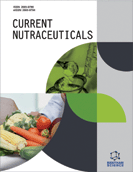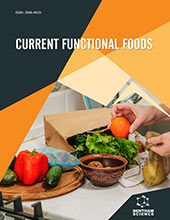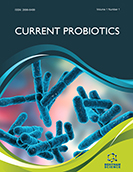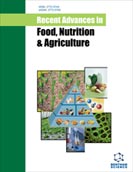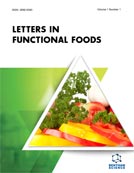Abstract
Background: Fourier Transform InfraRed spectroscopy analysis on Bacillus clausii and Bacillus clausii in the presence of trehalose are reported.
Objective: In order to characterize the thermal response of such systems the InfraRed technique was employed to collect the spectra from 25.0°C to 80.0°C in the 4000 cm-1-400 cm-1 spectral range.
Methods: The data analysis was performed focusing the attention to the intramolecular OH stretching vibrational region by means evaluating the spectral distance as a function of temperature.
Results: From this analysis it emerges that the thermal restraint of Bacillus clausii in the presence of trehalose is higher in respect to Bacillus clausii alone.
Conclusion: Such a result, which confirms the bioprotective role of trehalose against external temperature changes, provides useful information for the applications of the disaccharide in food industry.
Keywords: Specroscopic techniques, Bacillus clausii, trehalose, temperature, thermal restraint, spectral distance.
Graphical Abstract
Current Nutrition & Food Science
Title:An FT-IR Based Investigation of Trehalose Mediated Thermal Stabilisation of Bacillus clausii
Volume: 17 Issue: 6
Author(s): Maria T. Caccamo and Salvatore Magazù*
Affiliation:
- Dipartimento di Scienze Matematiche e Informatiche, Scienze Fisiche e Scienze della Terra, Università di Messina, Viale Ferdinando Stagno D'Alcontres no. 31, S. Agata, 98166, Messina,Italy
Keywords: Specroscopic techniques, Bacillus clausii, trehalose, temperature, thermal restraint, spectral distance.
Abstract:
Background: Fourier Transform InfraRed spectroscopy analysis on Bacillus clausii and Bacillus clausii in the presence of trehalose are reported.
Objective: In order to characterize the thermal response of such systems the InfraRed technique was employed to collect the spectra from 25.0°C to 80.0°C in the 4000 cm-1-400 cm-1 spectral range.
Methods: The data analysis was performed focusing the attention to the intramolecular OH stretching vibrational region by means evaluating the spectral distance as a function of temperature.
Results: From this analysis it emerges that the thermal restraint of Bacillus clausii in the presence of trehalose is higher in respect to Bacillus clausii alone.
Conclusion: Such a result, which confirms the bioprotective role of trehalose against external temperature changes, provides useful information for the applications of the disaccharide in food industry.
Export Options
About this article
Cite this article as:
Caccamo T. Maria and Magazù Salvatore*, An FT-IR Based Investigation of Trehalose Mediated Thermal Stabilisation of Bacillus clausii, Current Nutrition & Food Science 2021; 17 (6) . https://dx.doi.org/10.2174/1573401317666210210130042
| DOI https://dx.doi.org/10.2174/1573401317666210210130042 |
Print ISSN 1573-4013 |
| Publisher Name Bentham Science Publisher |
Online ISSN 2212-3881 |
 90
90
- Author Guidelines
- Bentham Author Support Services (BASS)
- Graphical Abstracts
- Fabricating and Stating False Information
- Research Misconduct
- Post Publication Discussions and Corrections
- Publishing Ethics and Rectitude
- Increase Visibility of Your Article
- Archiving Policies
- Peer Review Workflow
- Order Your Article Before Print
- Promote Your Article
- Manuscript Transfer Facility
- Editorial Policies
- Allegations from Whistleblowers
- Announcements


